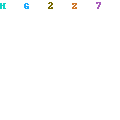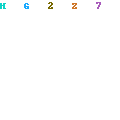Load the file goodform.c and observe it on your monitor.
main() /* Main program starts here */
{
printf("Good form ");
printf ("can aid in ");
printf ("understanding a program.\n");
printf("And bad form ");
printf ("can make a program ");
printf ("unreadable.\n");
}
It is an example of a well formatted program. Even though it is very short and therefore does very little, it is very easy to see at a glance what it does. With the experience you have already gained in this tutorial, you should be able to very quickly grasp the meaning of the program in it’s entirety. Your C compiler ignores all extra spaces and all carriage returns giving you considerable freedom concerning how you format your program. Indenting and adding spaces is entirely up to you and is a matter of personal taste. Compile and run the program to see if it does what you expect it to do. Now load and display the program uglyform.c and observe it.
main( ) /* Main program starts here */{printf("Good form ");printf
("can aid in ");printf(" understanding a program.\n")
;printf("And bad form ");printf("can make a program ");
printf("unreadable.\n");}
How long will it take you to figure out what this program will do? It doesn’t matter to the compiler which format style you use, but it will matter to you when you try to debug your program. Compile this program and run it. You may be surprised to find that it is the same program as the last one, except for the formatting. Don’t get too worried about formatting style yet. You will have plenty of time to develop a style of your own as you learn the language. Be observant of styles as you see C programs in magazines, books, and other publications. This should pretty well cover the basic concepts of programming in C, but as there are many
other things to learn, we will forge ahead to additional program structure.
main() /* Main program starts here */
{
printf("Good form ");
printf ("can aid in ");
printf ("understanding a program.\n");
printf("And bad form ");
printf ("can make a program ");
printf ("unreadable.\n");
}
It is an example of a well formatted program. Even though it is very short and therefore does very little, it is very easy to see at a glance what it does. With the experience you have already gained in this tutorial, you should be able to very quickly grasp the meaning of the program in it’s entirety. Your C compiler ignores all extra spaces and all carriage returns giving you considerable freedom concerning how you format your program. Indenting and adding spaces is entirely up to you and is a matter of personal taste. Compile and run the program to see if it does what you expect it to do. Now load and display the program uglyform.c and observe it.
main( ) /* Main program starts here */{printf("Good form ");printf
("can aid in ");printf(" understanding a program.\n")
;printf("And bad form ");printf("can make a program ");
printf("unreadable.\n");}
How long will it take you to figure out what this program will do? It doesn’t matter to the compiler which format style you use, but it will matter to you when you try to debug your program. Compile this program and run it. You may be surprised to find that it is the same program as the last one, except for the formatting. Don’t get too worried about formatting style yet. You will have plenty of time to develop a style of your own as you learn the language. Be observant of styles as you see C programs in magazines, books, and other publications. This should pretty well cover the basic concepts of programming in C, but as there are many
other things to learn, we will forge ahead to additional program structure.

